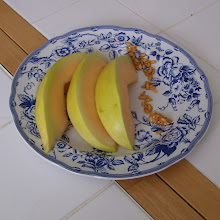In the following arpeggio section, the "drumbeats" are strong. Then comes a repeat of the first fugue theme.
In the next section, (page 6, in my edition) there is a section common to several Bach movements I can think of. It's the "phew, we can relax now, everything is going to be okay" section. It's not a recapitulation section, where you know everything is okay. It's the "everything will be okay (kn0ck on wood)" section, followed by more drama, before the actually recap. This movement is in G-minor, but this section begins in the relative major key, B-flat major.
The sad part about this movement is that in the end, you don't find out that everything is okay. It's a recap of a theme in G-minor! You find out that everything is just as melancholy as it was to begin with, and that is somewhat reassuring.
In the other instances of the "phew" section, it's not always in the relative major key. In the Chaconne of the D-minor Partita, the "phew" section is in D-major, while the movement is in D-minor. In the Préludio of the E-major partita, the "phew" section is in... key changes too frequently.
One of the many cool things about the Chaconne, which I will play much later but have already been studying for a while (listening to it and casually playing it) is that the last note is just an open D doubled on the G string, but somehow it FEELS major, whereas the movement began in D-minor. Everything IS okay at the end of the Chaconne, in other words.
Apology: I am going to have to number my measures and cite measure numbers, at least, and at best, I hope to be able to link to audio files illustrating my points. I know it may be impossible to know what I'm referring to the way I am currently writing.
